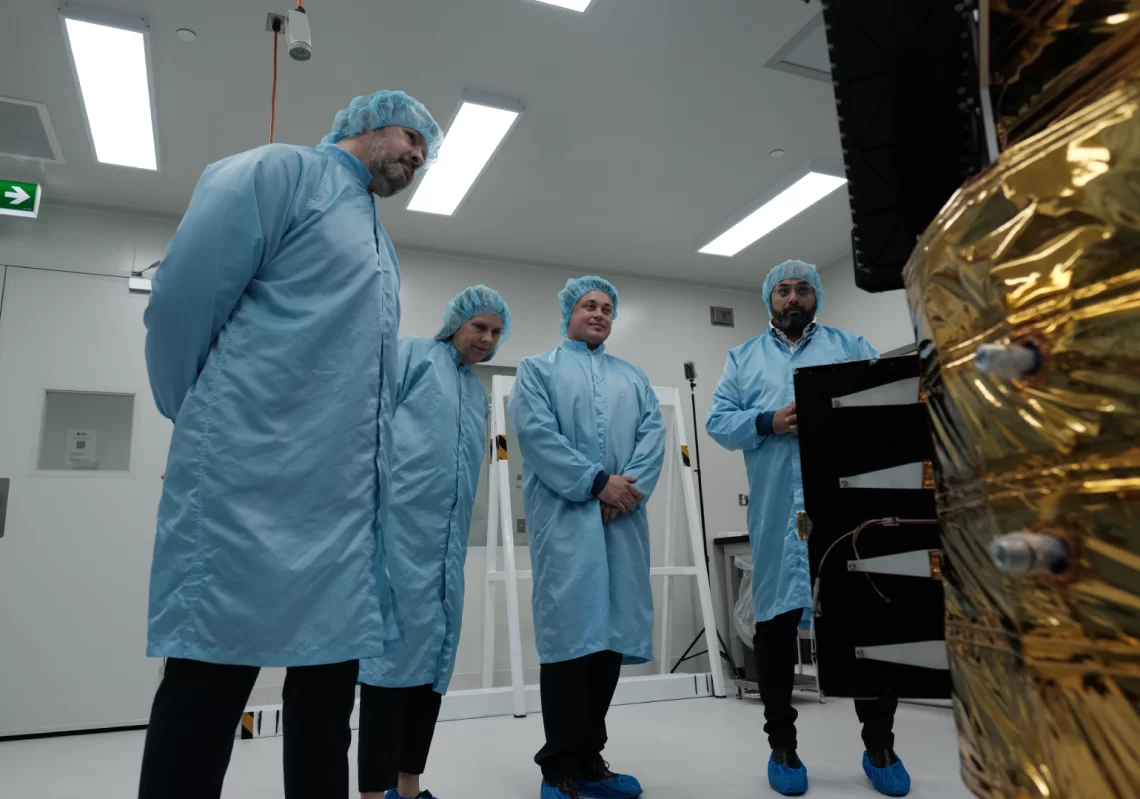WOBO appreciates the links provided by Create Digital on developments within Australia.

New homegrown robotics lab promises to spearhead AI innovation
A new manufacturing lab from Advanced Navigation promises new developments in robotics and autonomous systems.
The industry-leading Australian company Advanced Navigation has unveiled its new AI and robotics facility for autonomous systems, based at UTS Tech Lab.
The lab aims to accelerate the manufacturing of technologies such as strategic-grade fibre-optic gyroscopes, which empowers reliable navigation for marine vessels, space missions, autonomous vehicles, flying taxis and more.
The unveiling was attended by Minister for Industry and Science Ed Husic, and Advanced Navigation Board Director and former Prime Minister Malcolm Turnbull.

Three ways to solve engineering education challenges
The Australian Universities Accord Interim Report is a fantastic step forward in strengthening the engineering profession. But Engineers Australia has a few extra strategies to bring about long-lasting change.
In the University Accord’s report outlining a vision for the future of Australia’s higher education system, I was delighted to see engineering repeatedly mentioned as a profession that is critical to Australia’s future.
As we know, many of our national priorities rely on engineering. From delivering an enormous and resilient infrastructure pipeline, building a sovereign manufacturing capability, reaching our energy transition and net zero emissions goals, preserving biodiversity and building a circular economy, through to delivering on AUKUS nuclear submarine and other Defence capabilities, and cybersecurity – our objectives as a nation all rely on technological systems, requiring engineers at all stages of their life cycles.

Partnering to embrace Industry 4.0
Researchers and students from Swinburne University of Technology are finding pioneering ways to harness advanced manufacturing, digital and automation technologies to improve outcomes across a raft of industry sectors.
The pace of digitalisation and advances in machine learning are so fast that companies attempting to jump on the automation bandwagon need their own automation, digital and artificial intelligence (AI) algorithms to keep up with the almost daily technological breakthroughs.
But manufacturers tempted to bury their heads in the sand rather than embrace the new opportunities might not be able to remain competitive for much longer.
Their challenge is to explore the possibilities of innovation to find their own bespoke solution. That’s not an easy task.

These tiny spikes skewer bacteria and fungi
Researchers thought engineering super-smooth materials would stop bacteria attaching to surfaces. They were wrong.
When Distinguished Professor Elena Ivanova was researching anti-microbial materials a decade ago, it was believed bacteria wouldn’t be able to stick to smooth surfaces.
She started studying mirror-like surfaces, looking even at atomically-smooth materials to see if they could repel microorganisms. The results were deflating, to say the least.
“Initially, people thought that if we make a surface very, very smooth … bacteria will not be able to attach on the surface,” Ivanova told create. “To our huge surprise, bacteria actually liked that.
“They managed to attach nicely and develop biofilms on the nanoscopically smooth surfaces. And that was so disappointing.”

Attestation to boost construction safety
Specifying building products certified by an accredited conformity assessment body provides confidence and can help raise the bar for the entire industry.
Some building products can be extremely dangerous in certain circumstances if they don’t conform to recognised standards or reputable assessment criteria where there’s no standard, or if they are used incorrectly.
This presents a potential problem for design engineers, architects and building designers when they specify particular products.

How do engineers keep theme park rides safe?
For the engineers charged with bringing theme park rides to life, it’s vital to balance intensity and safety.
How does an engineer create excitement, danger and fun?
More importantly, how does an engineer ensure these thrills are actually safe, meeting all regulations, even as the end user is speeding through the sky, gliding across water or perched hundreds of metres in the air?
These are just a few of the challenges faced by Australia’s amusement park designers and engineers, who work hard to bring some of the safest “danger” you can experience across the country.
There are currently 35 operating roller coasters around Australia, with more than half of them in Queensland, as well as a raft of other amusement park rides across the country designed to entertain people.
Each one has required a unique design and engineering approach to suit Australian conditions and regulations.
But who are the people building fun from the ground up?

Longest weathering steel bridge in Australia
Construction will commence on the Molonglo River Bridge crossing – set to be the longest weathering steel bridge in Australia – early next year. The project could usher in a new era of improved road infrastructure.
Incorporating weathering steel into the Molonglo River Bridge crossing marks a significant step forward for the Australian bridge construction industry.
The project, encompassing the construction of an approximately 200 metre long steel girder bridge, along with 1.7 kilometres of new arterial roads and two new intersections, is key to enhancing connectivity between Molonglo and West Belconnen and the broader Canberra area, says Mark Gallagher, Construction Manager, BMD Constructions.
“The use of weathering steel provides long-term durability that reduces maintenance expenses, proving a practical investment for years to come. This is because weathering steel develops a protective patina over time, eliminating the need for additional coatings,” said Mark Gallagher, Construction Manager, BMD Constructions.
